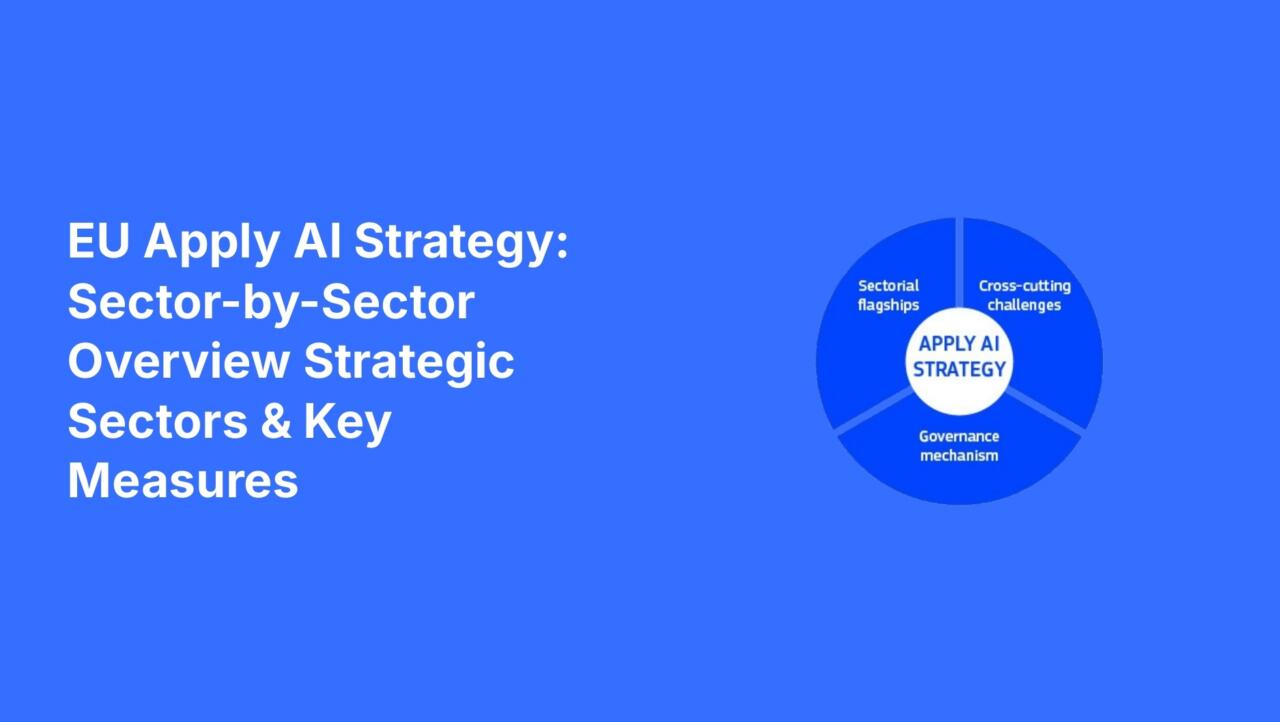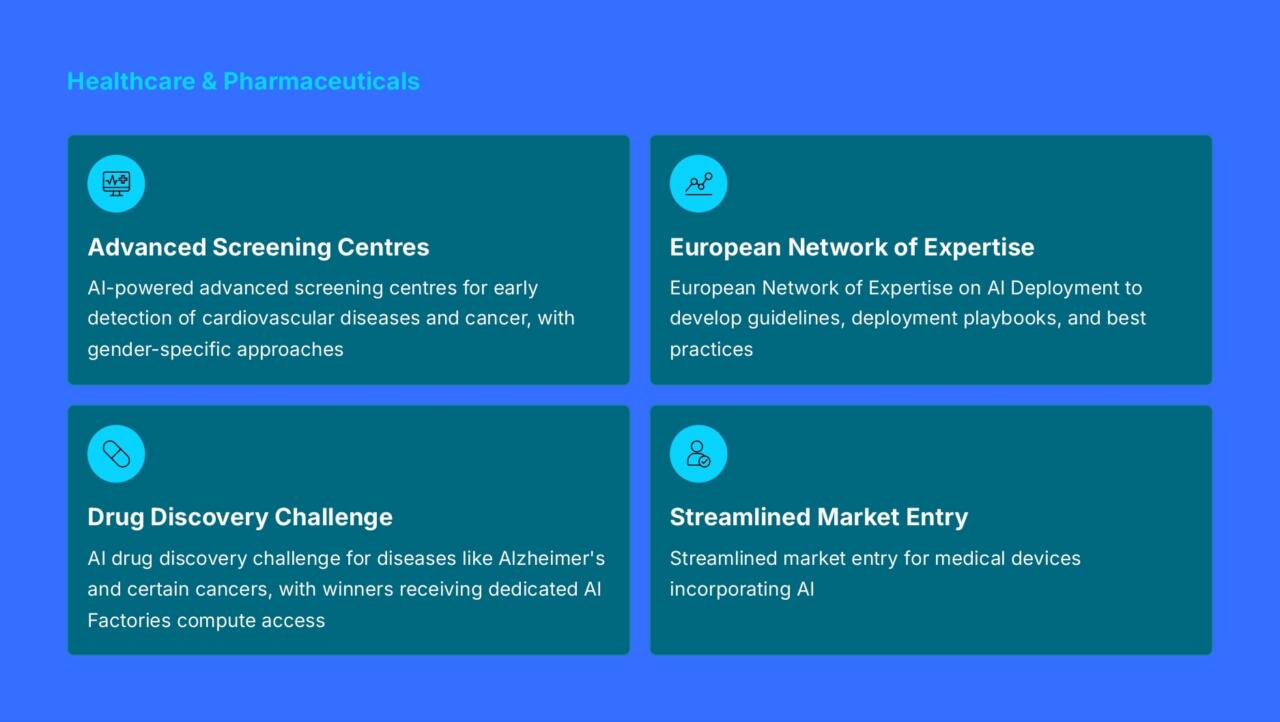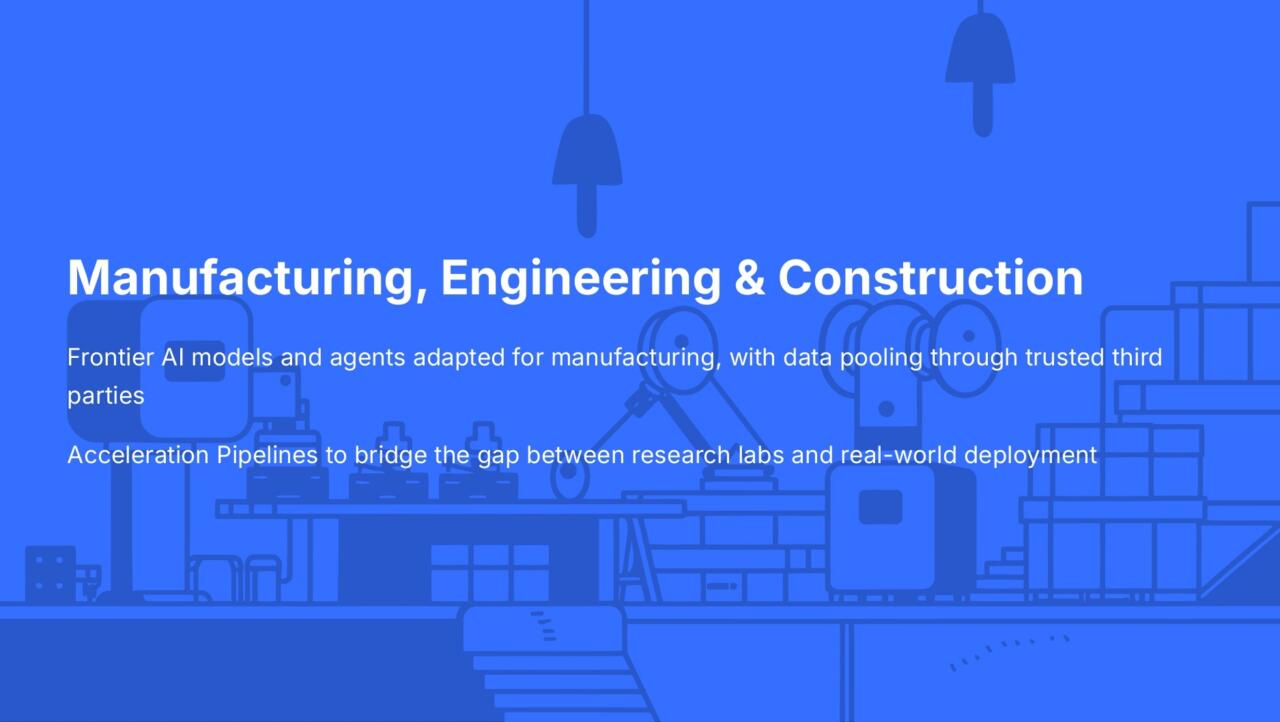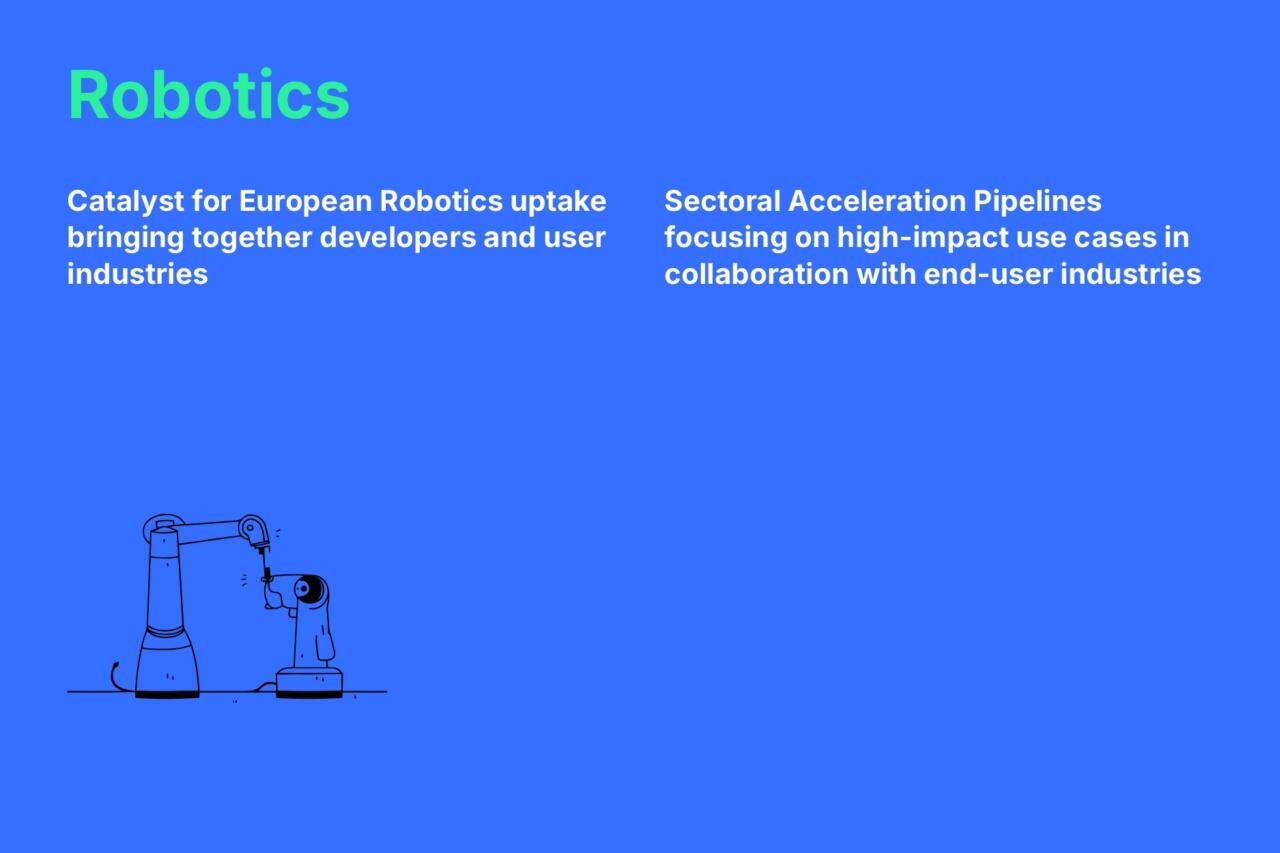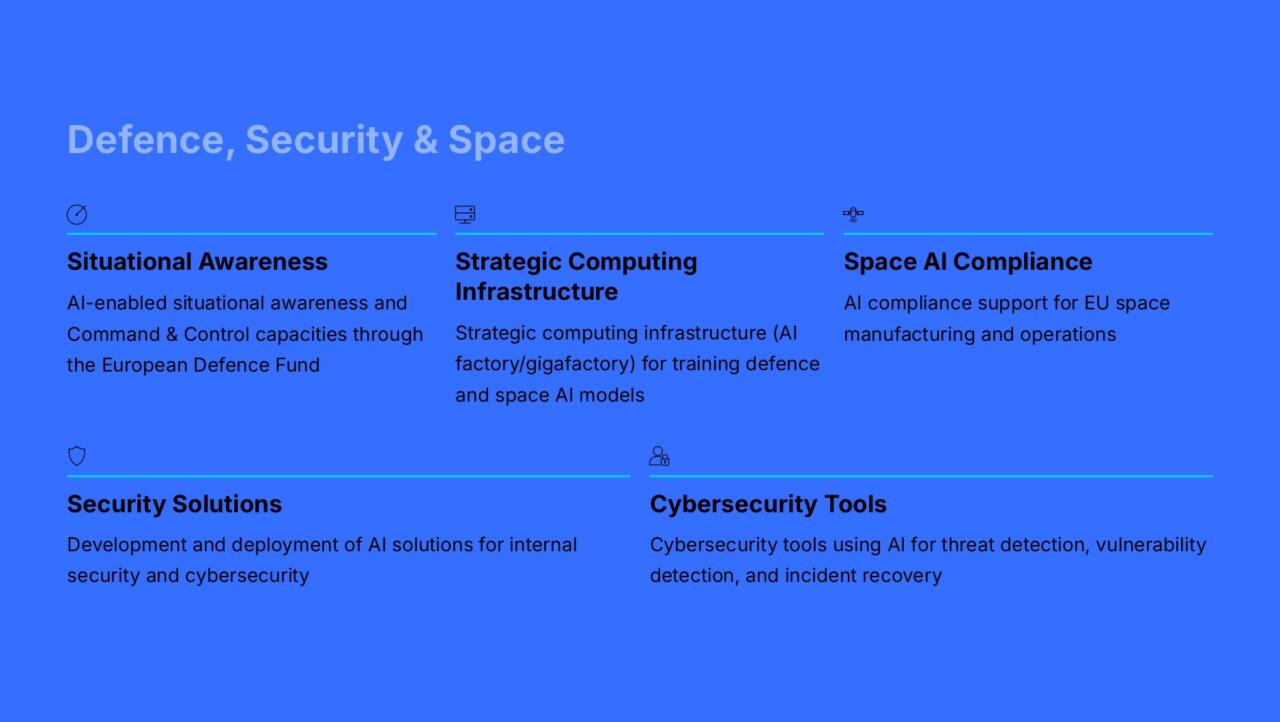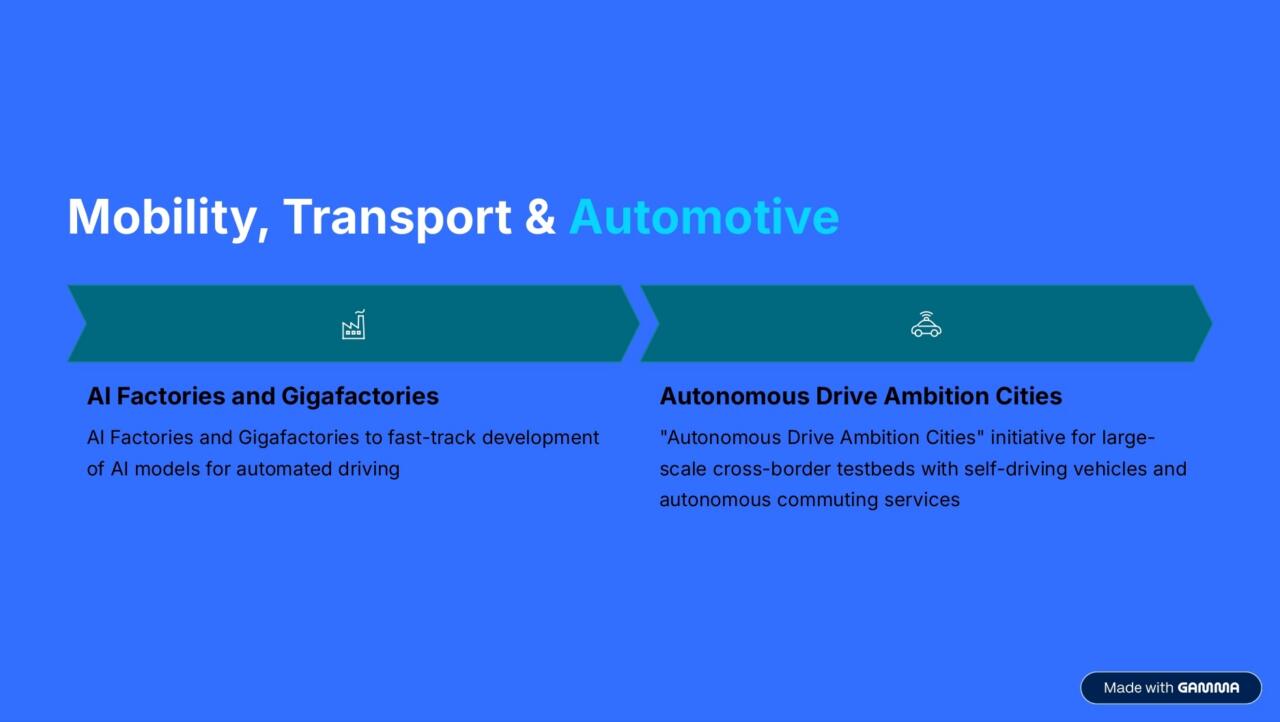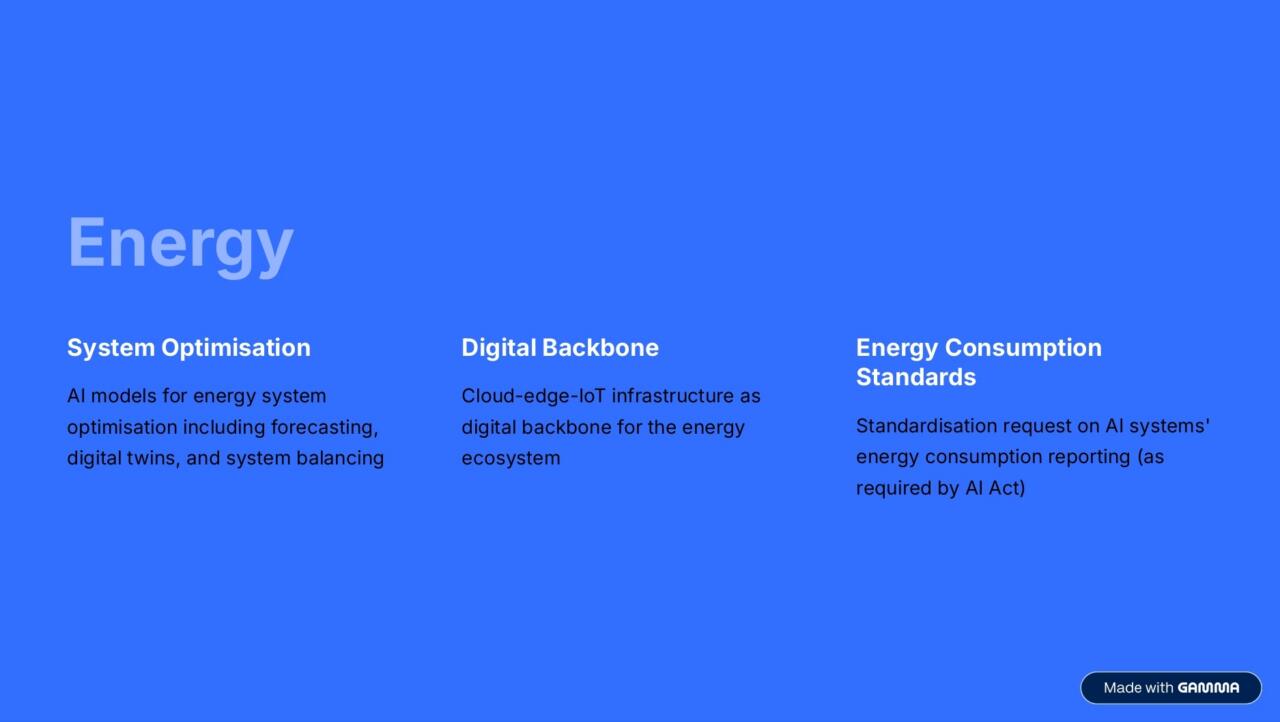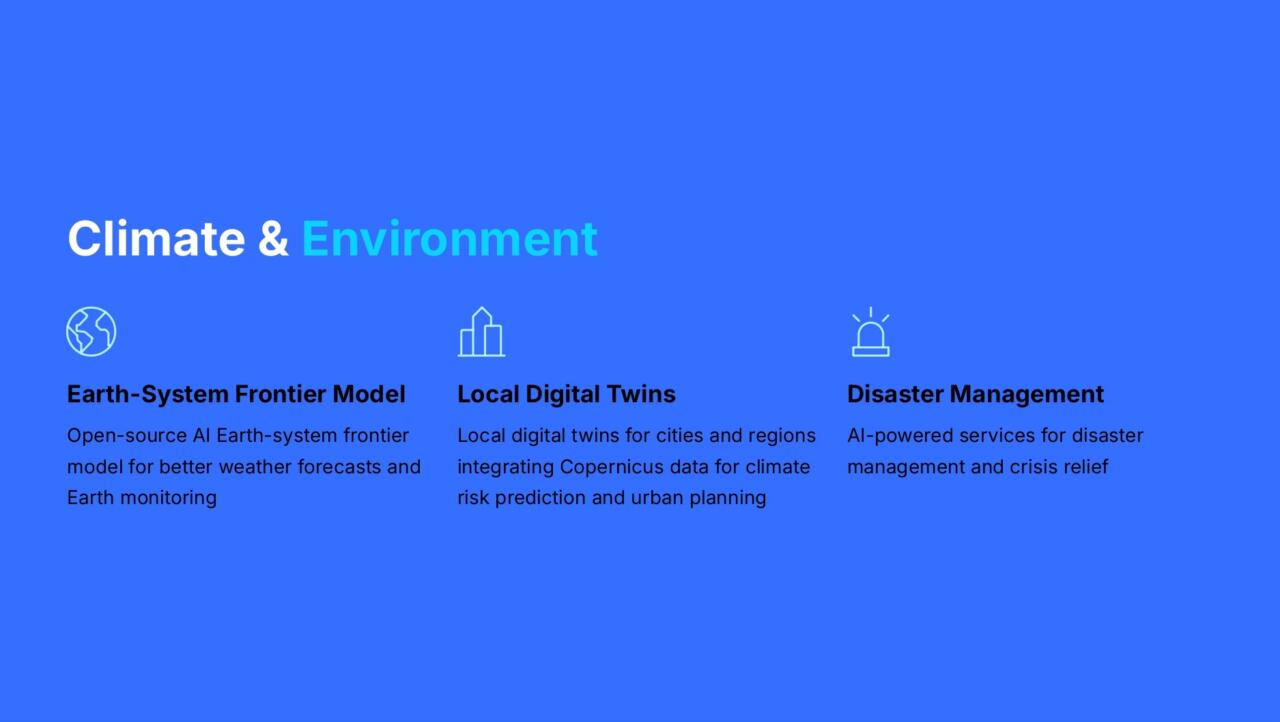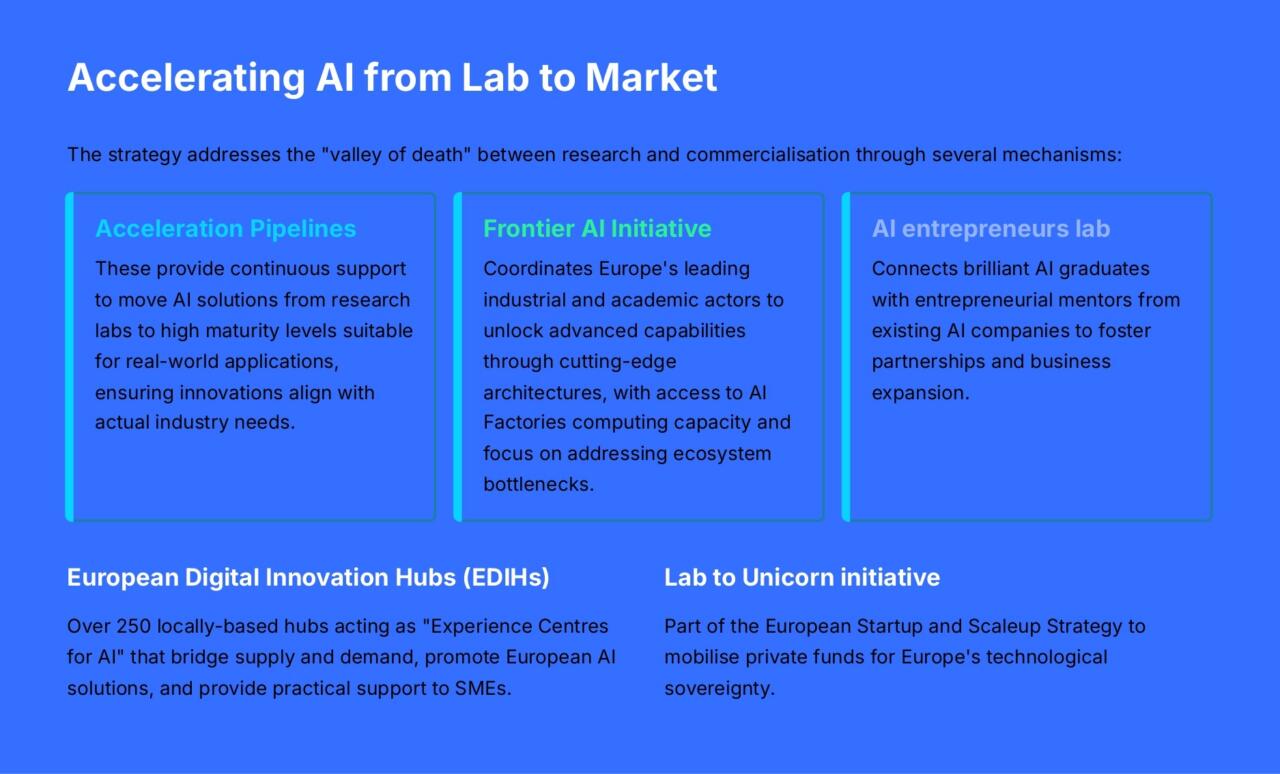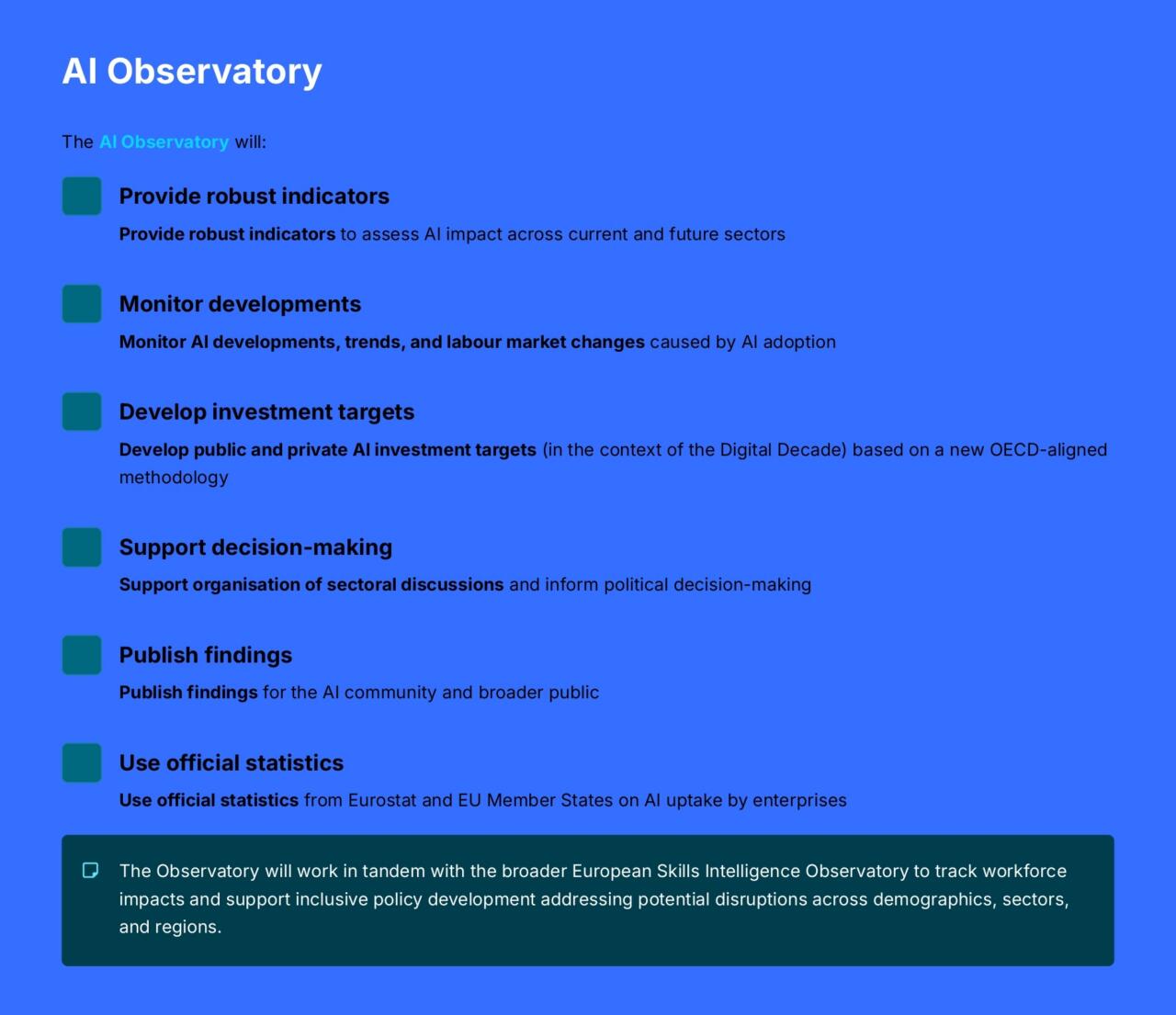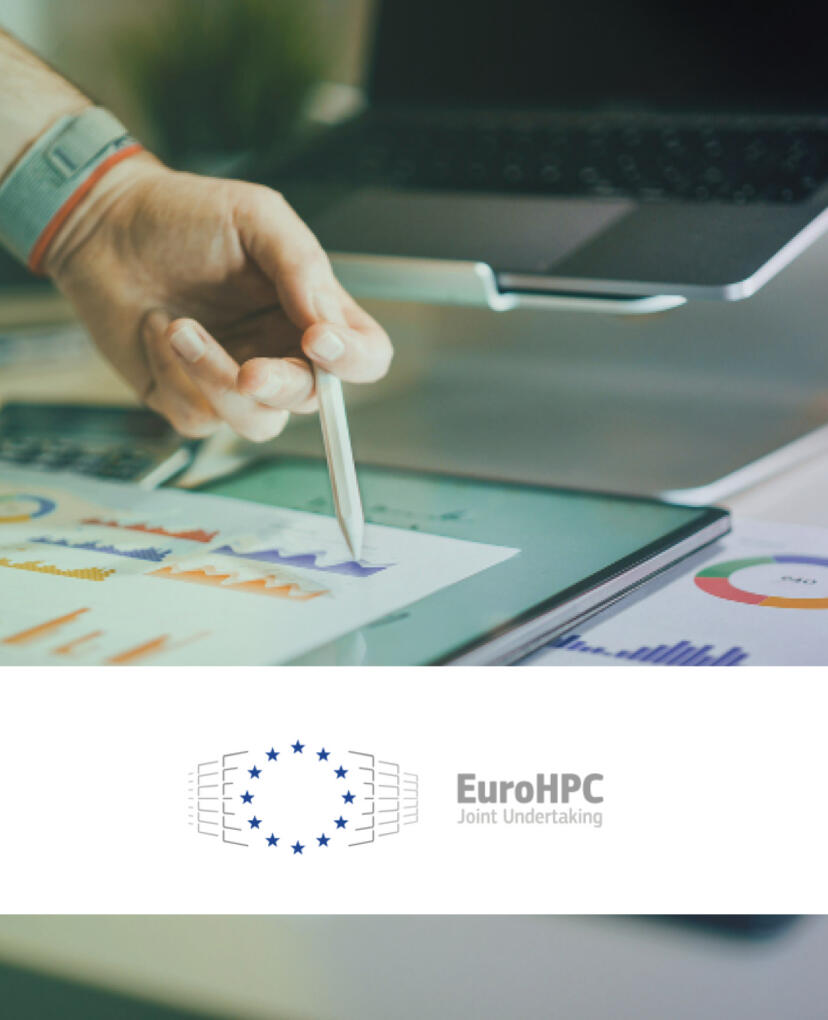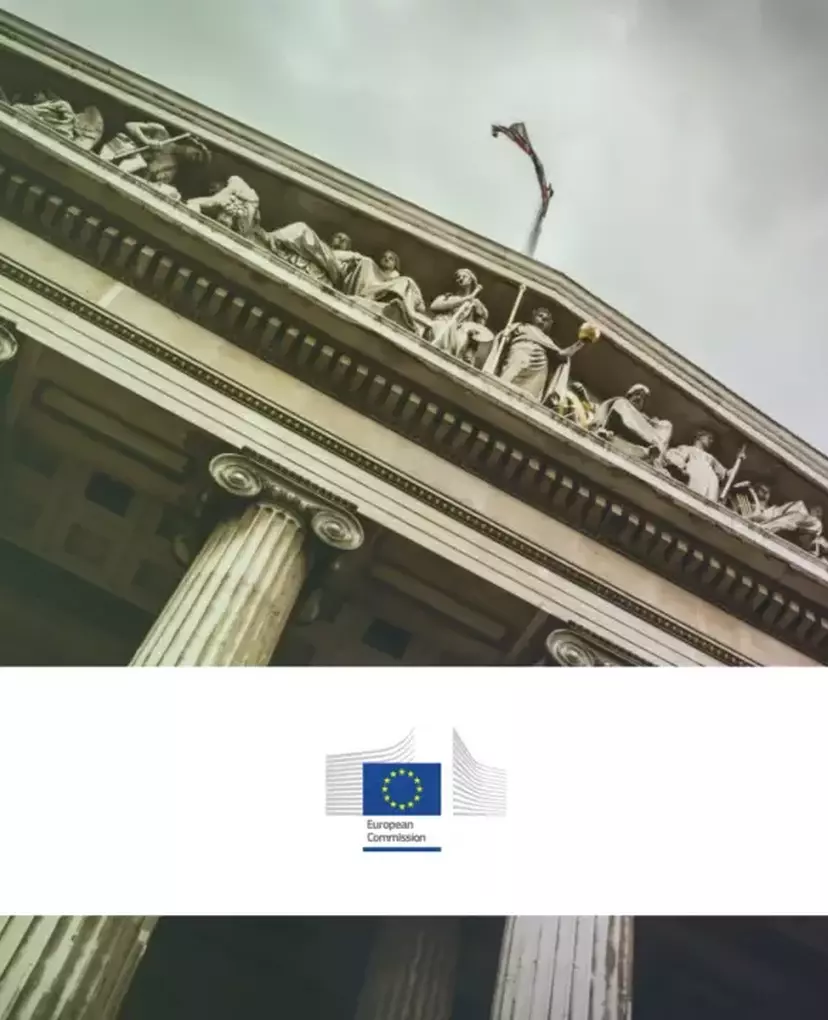The European Commission’s Apply AI Strategy is focused on deployment: putting AI technologies to use in concrete, high-impact sectors. The plan covers eleven priority domains, including healthcare, manufacturing, mobility, energy, agri-food, defence, telecommunications, culture, and the public sector. Each sector is assigned flagship projects designed to stimulate investment, improve coordination across Member States, and demonstrate the tangible benefits of trustworthy European AI.
At its core, the strategy is built around a new governance model connecting three layers: the AI Board (composed of national authorities), a new Apply AI Alliance (a forum for industry, civil society, and academia), and the AI Observatory, which will monitor adoption and measure progress. This structure is meant to ensure both accountability and flexibility, which allows the Commission to guide implementation while Member States and stakeholders shape how AI is actually applied in practice. The governance design reflects lessons learned from earlier digital initiatives that suffered from fragmentation and slow uptake.
The Commission presents this strategy as a concrete deployment plan, not a wish list. In healthcare, for instance, the EU will fund AI-powered screening centres for cardiovascular and cancer diagnostics, as well as a European network for AI-assisted drug discovery. In manufacturing and robotics, the focus lies on acceleration pipelines for industrial AI, with shared data spaces and digital twins enabling automation and predictive maintenance. The mobility sector will see “Autonomous Drive Ambition Cities,” where AI-driven transport systems are tested in real urban settings. Telecommunications companies are invited to join a European Telco AI platform to develop open-source network optimisation tools. In energy and climate, AI models will underpin grid balancing and forecasting, while the Destination Earth initiative evolves into a frontier-scale environmental model trained in EU supercomputing facilities.
Similar actions are planned for agri-food, where an Agri-AI platform will help farmers access trustworthy AI tools, and for the creative and media sectors, where small AI micro-studios and multilingual media platforms are expected to boost European content production and visibility. The public sector, finally, will receive an AI toolbox of open-source and reusable software components and guidance on integrating generative AI responsibly. Further, a Public Sector AI & Interoperability Readiness Pathway (PAIR) will be launched to provide practical step-by-stepp examples within a user journey that will help administrations develop services tailored to their specific needs.
Despite its sectoral focus, the Apply AI Strategy faces several cross-cutting challenges that will determine its success. The first is funding scale and fragmentation: with only €1 billion in seed funding, the strategy relies heavily on Member States and private actors to bridge the investment gap, which might raise concerns about uneven uptake across Europe. A second challenge lies in coordination and governance: aligning national authorities, EU programmes, and industrial alliances under the new governance model will test institutional agility in a system known for slow execution. Third, skills shortages remain a structural obstacle; while the AI Skills Academy is a step forward, Europe still lacks the trained engineers, domain experts, and regulatory professionals to sustain large-scale AI deployment. Finally, the EU must navigate trust and rights protection amid rapid technological change. This means that it has to ensure the drive to “apply AI” does not dilute hard-won safeguards on data protection, transparency, and fundamental rights.
Financially, the strategy does not create an entirely new funding stream but rather mobilises existing programmes, around €1 billion in total, from Horizon Europe, Digital Europe, EU4Health, and Creative Europe. The Commission expects this to trigger additional investment from Member States and private sources. Critics, however, have quickly pointed out that this amount is far less in comparison to the tens of billions being invested in AI ecosystems in the United States or China. European industry groups describe the funding as a useful start but warn that without serious leverage and faster procedures, the strategy risks becoming another underpowered initiative.
Beyond funding, the Apply AI Strategy is tightly interwoven with the implementation of the AI Act. It commits to establishing an AI Act Service Desk, detailed guidance on the classification of high-risk systems, and clearer interplay between horizontal and sector-specific legislation. For businesses, especially SMEs, this signals that compliance will be non-negotiable: market access in the EU will depend on adherence to these frameworks. At the same time, the Commission is trying to make compliance easier, for example, by providing open-source components and model documentation templates.
In sum, the Apply AI Strategy is designed as the deployment pillar within a broader EU AI architecture that also includes the AI Act, the AI Continent Plan, and the AI for Science and Innovation Strategy (RAISE). Together, these form a three-part structure: the AI Act provides the rules, the Continent Plan defines the vision and coordination mechanisms, and Apply AI delivers the execution layer through concrete sectoral projects and funding channels. It also links directly to RAISE by using EuroHPC compute resources and AI Factories to develop frontier models for science and industry. In essence, Apply AI operationalises the EU’s AI ambitions: translating high-level policy and research momentum into real-world adoption across Europe’s economy and public sector. The Data Union Strategy (to be published) should be the next piece of the puzzle.

